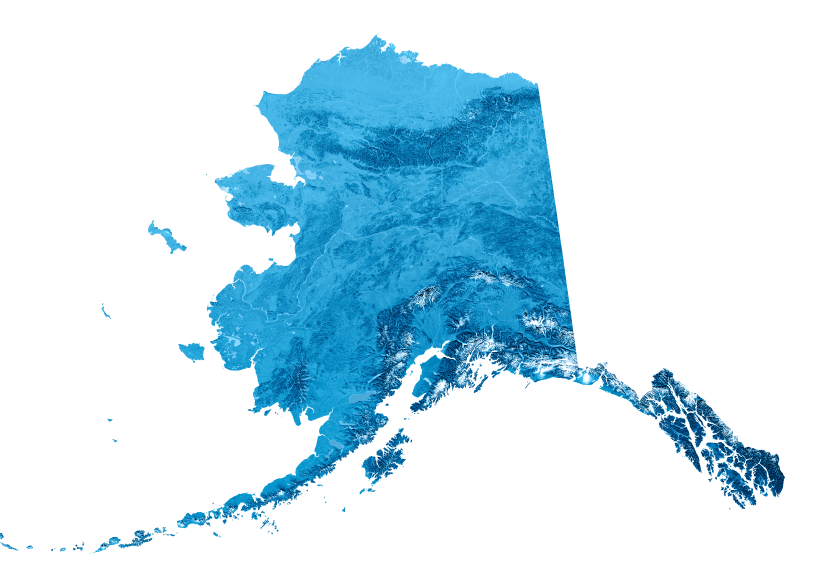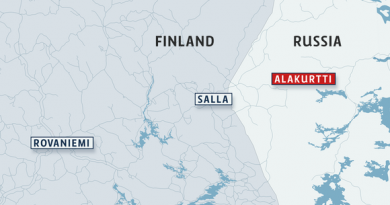New ferry contract part of effort to create shipbuilding industry in Alaska

JUNEAU — Gov. Sean Parnell last month traveled to Ketchikan to announce that an Alaska shipyard in that city would be building the state’s new “Alaska class” ferries.
The news that Vigor Alaska would win the $100 million contract for the first two ferries was welcomed in Ketchikan, which is still struggling with the loss of its pulp mill and the decline of the once-dominant timber industry.
The new ferries will be “made in Alaska, by Alaskans. It’s awesome,” Parnell said.
But as news stories go, the announcement wasn’t all that surprising.
Diversifying the economy
Vigor Alaska, a subsidiary of Northwest-based Vigor Industrial, had months earlier been selected by the state for the sole-source, no-bid contract. All it needed to do was to agree with the state on a price.
The Vigor ferry contract is part of an effort to create a shipbuilding industry in Alaska, with officials hoping that subsidized ferry construction can lead to a viable new industry and diversify the Alaska economy. The expansion of the shipyard’s capabilities and the associated jobs have long been wanted in Ketchikan as well as in marine-dependent industries across Alaska.
And that’s part of a broader Alaska effort to grow industries with various subsidies, including the rocket-launch industry in Kodiak and the film industry in Anchorage and elsewhere, in hopes such burgeoning industries will diversify the state’s economy. But many of those efforts began before the state fell into deficit spending, and Alaska is now dipping into savings to continue those subsidies.
In Ketchikan, the state used a new process for building a state ferry to give the contract to Vigor. It’s called “construction manager/general contractor,” or CMGC, and it involves getting the company that will build the ferry involved earlier than normal, while the vessel is still being designed. Then, when the company is familiar enough with the design to know what it will cost, it negotiates a “guaranteed maximum price” at which it can be profitable and which the state thinks is fair.
$120 million project
Only Vigor Alaska was chosen to begin that process.
One of the downsides to CMGC, instead of giving the construction contract to the low bidder, is that the winning shipyard might not have been Vigor Alaska. But Parnell wanted the vessels built here.
“Building these ferries in state will be a major boost for Alaska’s economy. This has been our intent during the entire process and will help create hundreds of new year-round jobs at the Ketchikan shipyard,” Parnell said in making the announcement.
In this case the price for the two 280-foot vessels is $101.5 million. Additional costs of the full $120 million project include state expenses for such things as the design work it paid for and the engines that the state is purchasing separately.
That’s in contrast to the traditional low-bid process used by governments. Had Alaska used that process, the design would have been completed and then bids would have been sought from shipyards to build the vessels, with the work going to the shipyard offering the best price.
The new Alaska-class ferry contract was the first time the Alaska Marine Highway System has used the CMGC process on a ferry. In fact, department officials told the Marine Transportation Advisory Board that it will be the first time any vessel in the United States has been built under that procurement process.
“CMGC has never been used in a marine application … but we’ve got a lot of experience with CMGC building roads and buildings,” said Capt. John Falvey, general manager of the Alaska Marine Highway System.
It was successfully used for building the new state crime lab and fish hatcheries in Anchorage and Fairbanks, state officials said.
Procurement rules
The negotiations with Vigor were made challenging by unfamiliarity with the process and state procurement officials in Anchorage who had built buildings were joined by Alaska Marine Highway System staff with shipbuilding experience to implement the process, Falvey said.
“We teamed them up with our team here who are very, very experienced building ships,” he said.
Alaska procurement rules provide a 5 percent preference for Alaska bidders, said Jeremy Woodrow, spokesman for the department, and the new ships are within that amount.
Falvey said it was “hypothetical” to try to figure out what it would cost to build the ferries under the traditional process or outside Alaska.
“I think we got a good, fair price for these ships,” he said.
To use the local bidder preference, the state “defederalized” the project, meaning that it is now going to be built entirely with money from the state general fund. That change involved returning the federal money that had already been spent, but transportation officials said they were able to shift $1 million or more that had already been spent to other projects so that it never actually left Alaska.
Potential savings
The biggest benefit to the CMGC process is its ability to prevent cost overruns, a peril for big project of all kinds.
“It eliminated a lot of the risk of cost overruns. That’s what it is designed to do, solve some of the problems before you get to them,” Falvey said.
And there are even some potential savings to building in Alaska.
“Annual overhauls will be performed by Vigor Alaska (in Ketchikan), where cost savings will likely be realized due to familiarity with the two vessels,” Woodrow said.
And Vigor Alaska’s shipyard is adjacent to the ferry system headquarters in Ketchikan. That will greatly reduce travel costs that the state would have incurred had the new ferries been built elsewhere, Woodrow said.
The Vigor shipyard in Ketchikan was known as Alaska Ship and Drydock before its 2012 purchase by Vigor Industrial. That company has been buying up shipyards in Oregon, Washington and Alaska. It has built numerous vessels, ranging from fishing boats to 500-foot barges to the new 144-vehicle Washington state ferry Tokitae, said Vigor Industrial spokesperson Heather Blahnik. The Alaska-class ferries will carry 53 standard-sized vehicles.
The state’s Alaska Industrial Development and Export Authority owns the Ketchikan shipyard and leases it to operator Vigor Alaska. That provides an additional incentive for the state to make sure the company succeeds, officials said.
For Vigor, the ferry contract will be especially valuable for the Ketchikan shipyard because it was stretched to include two summers, providing work for the shipyard’s normally slow season.
Keeping skilled workers
Alaska vessel owners prefer to have their overhauls and upgrades done during the winter, typically leaving the shipyard with less work in the summer. The ferry work will help keep skilled workers on the job and prevent them from leaving for opportunities elsewhere.
The $120 million cost of the two vessels has already been appropriated by the Legislature.
The prospect of building new ferries for Southeast Alaska and in Southeast Alaska is popular in the region, and both gubernatorial candidates are outspoken in their support of efforts to keep the construction local.
Before Parnell had made his long-awaited construction announcement, his election opponent Bill Walker urged Parnell to ensure the Alaska-class ferry was built in Ketchikan.
But Walker also warned that limiting the cost of the two ferries to the $120 million appropriated in past years may not be realistic given the delays and Parnell’s earlier decision to significantly change the ferry design.
The state had spent $3.5 million designing a larger ferry before Parnell in 2012 decided he wanted smaller shuttle ferries without staterooms.
“There has been no explanation as to why the governor and Alaska DOT have chosen to single out and apply these restrictions to these Alaska Marine Highway projects but not to other transportation projects being advocated by DOT,” Walker said.
The first new ferry is scheduled to enter service in 2018, operating in Lynn Canal between Juneau, Haines and Skagway.
Contact Pat Forgey at pat@alaskadispatch.com
Asia: Full steam ahead for Asian icebreakers in the Arctic this summer, Blog by Mia Bennett
Canada: Canada’s Arctic patrol ships – A $250M mystery, CBC News
Finland: New Finland icebreaker can operate sideways with asymmetrical hull, Yle News
Russia: Russia, icebreakers and Arctic identity, Blog by Mia Bennett
Sweden: Swedish icebreakers gear up for Arctic role, Radio Sweden
United States: Alaska ships its first oil to Asia in a decade, Cryopolitics



